#bobbs merrill
Text
Milestone Monday










July 1, 1881, marks the world’s first international telephone call made between St. Stephen, New Brunswick, Canada and Calais, Maine, United States. Residents on either end of the Ferry Point International Bridge were able to call each other thanks to recent Bell Telephone lines putting them on the crest of quickly growing telephone communications.
In honor of the day, we’re sharing the children's book Telephone originally written by Kornei Chukovsky (1882-1969) in Russian, translated and adapted by Marguerita Rudolph, and illustrated by Susan Perl (d. 1983). Chukovsky is Russia’s most popular children’s poet, with his witty rhythms and rhymes he has often been compared to Dr. Seuss. This is apparent in Telephone as he tells the tale of mischievous animals incessantly calling the author on the phone begging for snacks, galoshes, medicine, and a helping hand. The story is buoyed by Perl’s pen and ink line drawings of moonfaced children and anthropomorphized animals.
Special Collections holds the first American printing of Telephone published in 1971 by The Bobbs-Merrill Company of Indianapolis. The book features both Russian and English text on alternating pages. Telephone is another book from our extensive Historical Curriculum Collection that can be explored online here.

Read other Milestone Monday posts here
-Jenna, Special Collections Graduate Intern
#milestone monday#telephone#kornei chukovsky#susan perl#marguerita rudolph#bobbs merrill company#historical curriculum collection#children's books#pen and ink#illustrated books#russian literature#milestones#first international telephone call
29 notes
·
View notes
Text

Arlene Dahl's Lovescopes - Bobbs-Merrill - 1983 (design by Harry Chester Associates)
#witches#lovescopes#occult#vintage#astrology#astrological key#more exciting#more fulfilling#love life#love#horoscope#bobbs - merrill#arlene dahl#1983#harry chester associates
19 notes
·
View notes
Text

Would You Paint A Pumpkin Smile On My Face, And Call Me A Happy Disgrace?: I still love this Halloween special with its unclaimed Jack-o'-Lantern weeping forlorn tear-seeds atop the hill overlooking town, the kindly trio of rag dolls taking it upon themselves to deliver him from his plight and into the hands of an equally-despondent boy. This arrived two years after the dolls' wonderfully trippy musical feature film, debuting in prime time on Halloween night of 1979 and airing regularly thereafter into the early '90s, the special and the film having since descended into the video vortex, The Raggedies becoming more akin to collectible antiques than popular toys.
youtube
#raggedy ann and andy and the pumpkin who couldn't smile#halloween special#bobbs-merrill company#tv guide#cbs#1979
7 notes
·
View notes
Photo


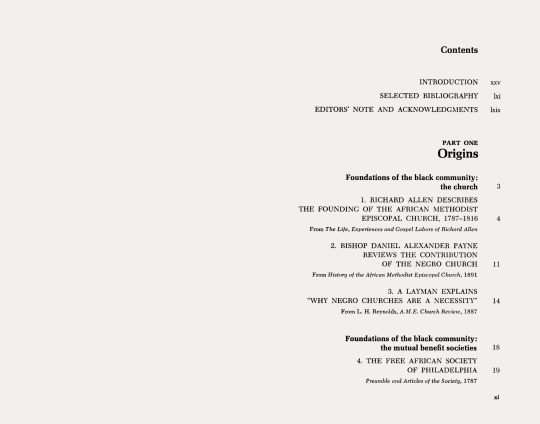
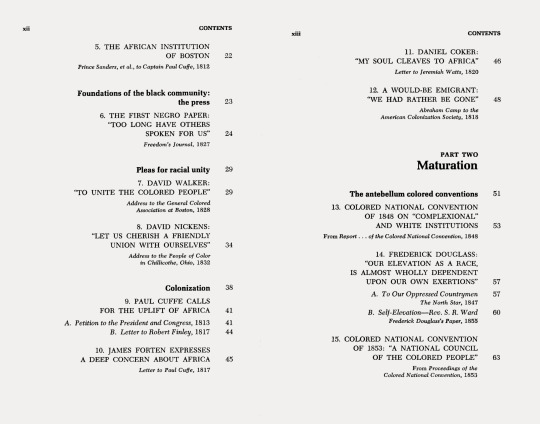

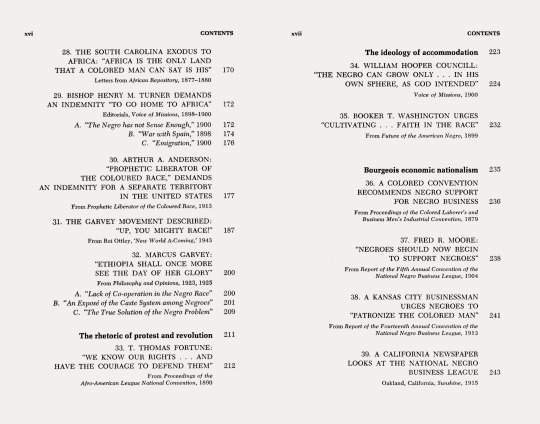

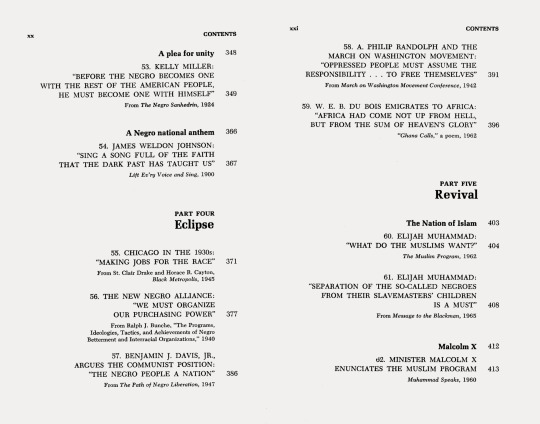
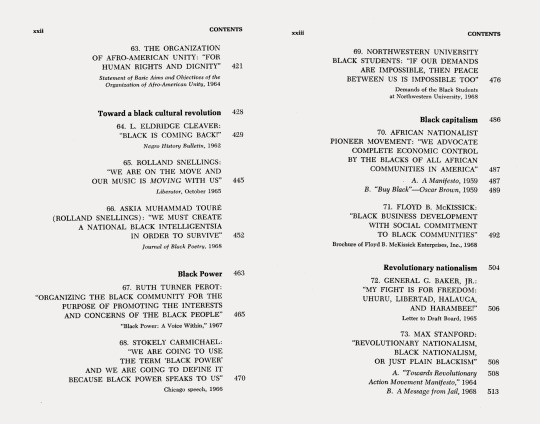
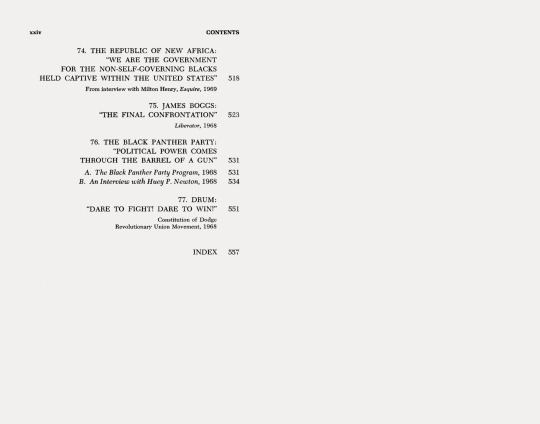
Black Nationalism in America, Edited by John H. Bracey, Jr., August Meier and Elliott Rudwick, «The American Heritage», The Bobbs-Merrill Company, Indianapolis, IN and New York, NY, 1970. Cover design by Andrew Kner
#graphic design#history#historiography#book#cover#book cover#john h. bracey#august meier#elliott rudwick#andrew kner#bobbs merrill company#1970s
23 notes
·
View notes
Text

The Surprising Adventures of the Magical Monarch of Mo by L. Frank Baum
The Bobbs-Merrill Company
Indianapolis
1913
Artist : Frank Verbeck
#l. frank baum#frank verbeck#1913#the surprising adventures of the monarch of mo#children's literature#children's books#vintage illustration#fairy story#children's book#old illustration
61 notes
·
View notes
Text






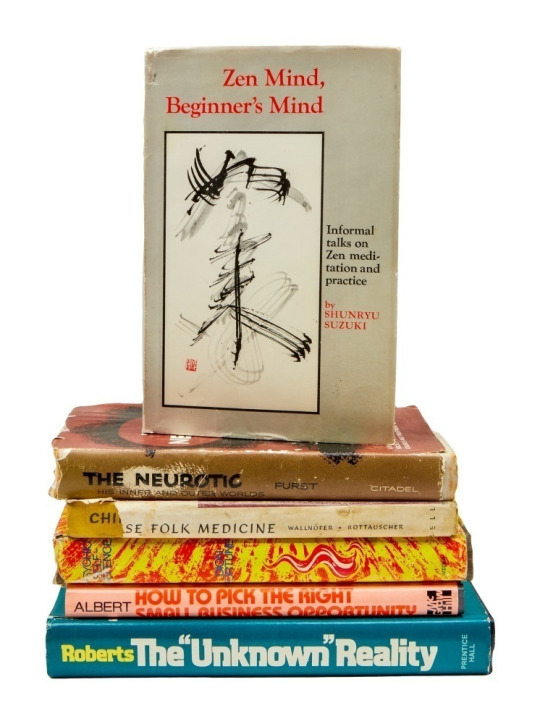
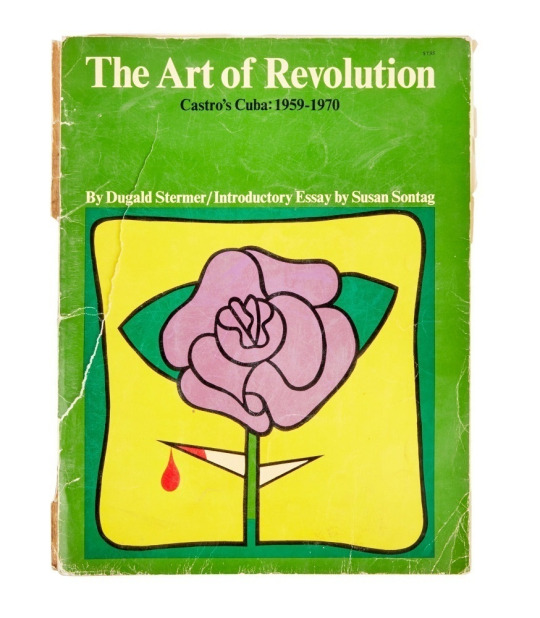
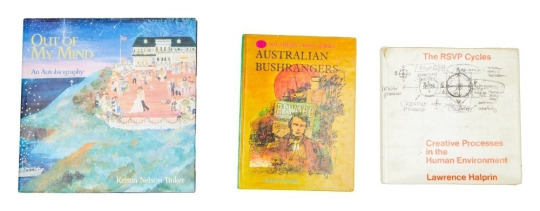
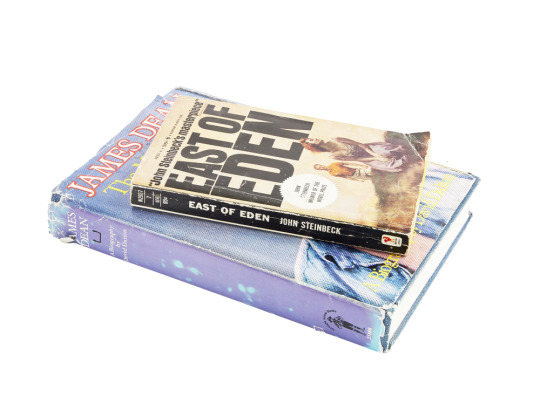


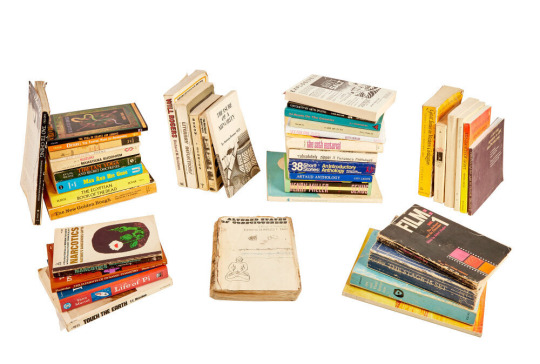
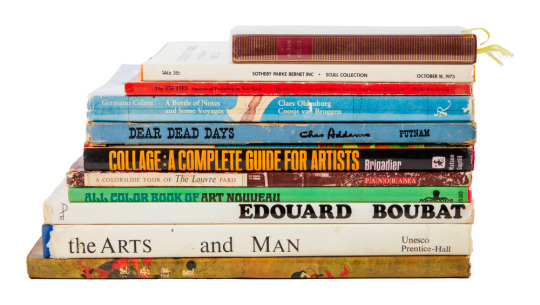

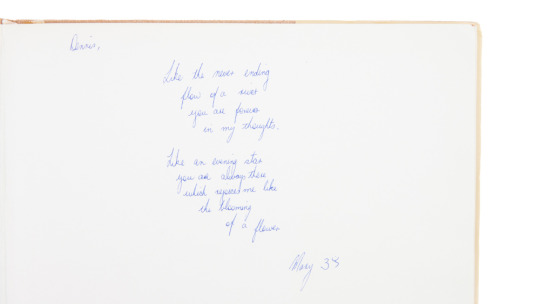
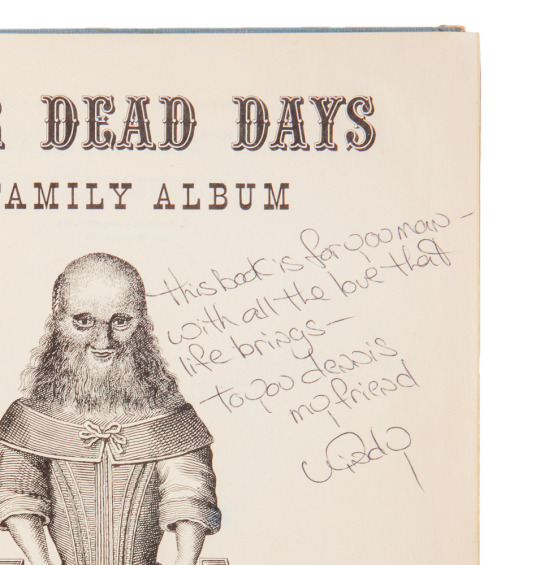
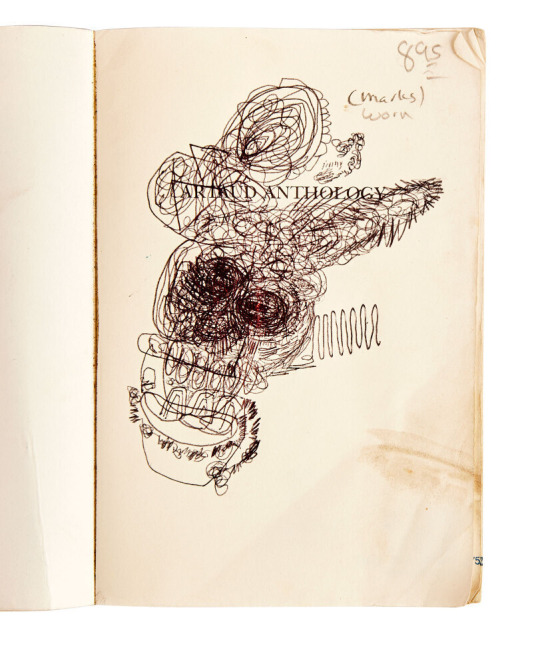
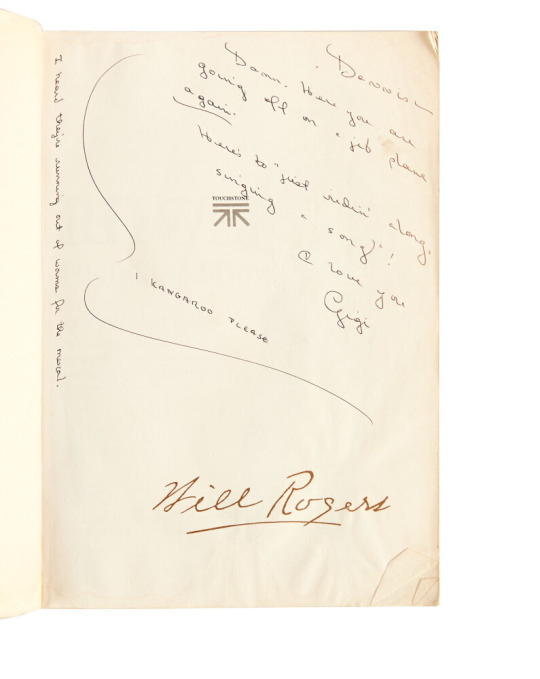
Dennis Hopper's collection of owned and gifted books
(a few are listed under the cut)
Islands in the Stream (Charles Scribner's Sons, 1970)
Magic (Delacorte Press, 1976)
Sneaky People (Simon and Schuster, 1975)
Strange Peaches (Harper's Magazine Press, 1972)
I Didn't Know I Would Live So Long (Charles Scribner's Sons, 1973)
Baby Breakdown (The Bobbs-Merrill Company, Inc., 1970)
37 (Holt, Rinehart and Winston, 1970)
Presences: A Text for Marisol (Charles Scribner's Sons, 1970)
Little Prayers for Little Lips, The Book of Tao, The Bhagavadgita or The Song Divine, and Gems and Their Occult Power.
Lolita (G.P. Putnam's Sons, 1955)
The Dramas of Kansas (John F. Higgins, 1915)
Joy of Cooking (The Bobbs-Merrill Company, 1974)
The Neurotic: His Inner and Outer Worlds (First edition, Citadel Press, 1954)
Out of My Mind: An Autobiography (Harry N. Abrams, Inc., 1997)
The Savage Mind (University of Chicago Press, 1966)
Alive: The Story of the Andes Survivors (J.B. Lippincott Company, 1974)
The Documents of 20th Century Art: Dialogues with Marcel Duchamp (Viking Press, 1971)
The Portable Dorothy Parker, A Portrait of the Artist as a Young Man, I Ching, and How to Make Love to a Man.
John Steinbeck's East of Eden (Bantam, 1962)
James Dean: The Mutant King (Straight Arrow Books, 1974) by David Dalton
The Moviegoer (The Noonday Press, 1971)
Erections, Ejaculations, Exhibitions and General Tales of Ordinary Madness (City Light Books, 1974)
Narcotics Nature's Dangerous Gifts (A Delta Book, 1973)
The Egyptian Book of the Dead (Dover Publications, 1967)
Tibetan Yoga and Secret Doctrines (Oxford University Press, 1969)
Junky (Penguin Books, 1977) by William S. Burroughs
Weed: Adventures of a Dope Smuggler (Harper & Row, 1974)
Alcoholics Anonymous (Alcoholics Anonymous World Services, 1976)
Skrebneski Portraits - A Matter of Record, Sketchbooks of Paolo Soleri, and High Tide.
Raw Notes (The Press of the Nova Scotia College of Art and Design, 2005)
Le Corbusier (Heidi Weber, 1965)
Henry Moore in America (Praeger Publishers, 1973)
Claes Oldenburg (MIT Press, 2012)
Notebooks 1959 1971 (MIT Press, 1972)
A Day in the Country (Los Angeles County Museum of Art, 1985)
Album Celine (Gallimard, 1977)
A Selection of Fifity Works From the Collection of Robert C. Scull (Sotheby Parke Bernet, Inc. 1973)
Collage A Complete Guide for Artists (Watsun-Guptill Publications, 1970)
The Fifties Aspects of Painting in New York (Smithsonian Institution Press, 1980)
A Bottle of Notes and Some Voyages (Rizzoli International Publications, 1988)
All Color Book of Art Nouveau (Octopus Books, 1974)
A Colorslide Tour of The Louvre Paris (Panorama, 1960)
Dear Dead Days (G. P. Putnam's Sons, 1959)
Woman (Aidan Ellis Publishing Limited, 1972)
The Arts and Man ( UNESCO, 1969)
Murals From the Han to the Tang (Foreign Languages Press, 1974)
A (Grove Press Inc., 1968)
Andy Warhol's Index Book (Random House, 1967)
Voices (A Big Table Book, 1969)
Another Country (A Dell Book, circa 1960s)
On The Road (Signet, circa 1980s)
90 notes
·
View notes
Text

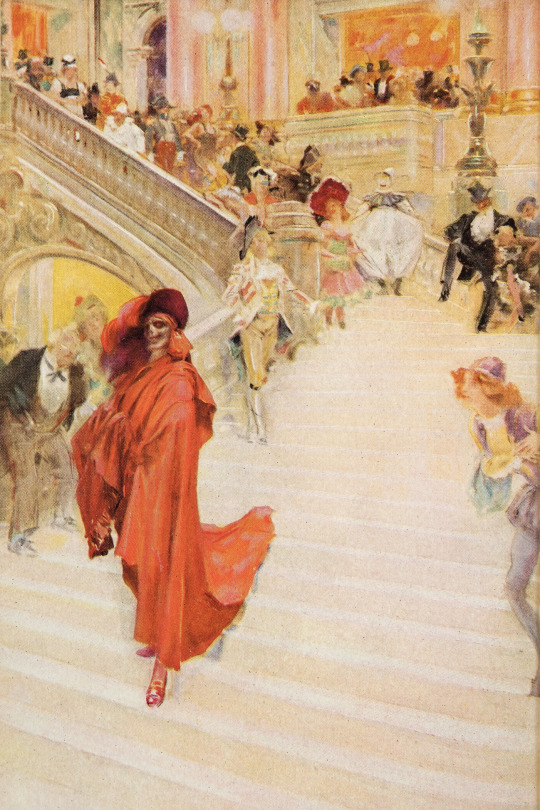

Gaston Leroux - The Phantom of the Opera (The Bobbs-Merrill Company, 1911).
Illustrated by Andre Castaigne.
#gaston leroux#andre castaigne#the phantom of the opera#horror books#mystery books#illustrations#horror art
243 notes
·
View notes
Text
Goodmorning everyone! Have I got a treat for you today:
Some Raggedy Ann licensing material! Post 1/2 (second half here) Source: ebay
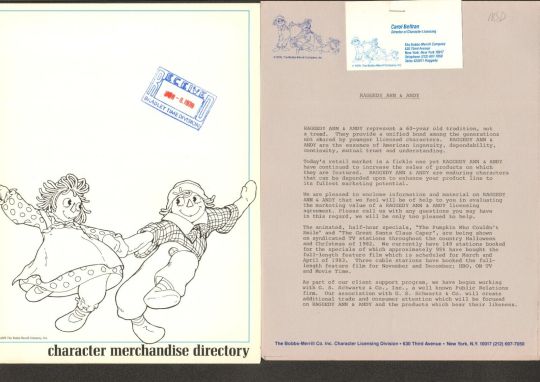
Fig 1: Character Merchandise Directory & Letter from The Bobbs-Merrill Company Inc. - Director of Character Licensing

Fig 2: Raggedy Ann & Andy a Musical Adventure lineart & Call Us promotional flyer

Fig 3: Raggedy Arthur & Raggedy Ann Black & White Licensing Slicks

Fig 4: Raggedy Ann & Andy Color Licensing Slicks
#raggedy ann#raggedy andy#chuck jones#raggedy ann and andy in the great santa claus caper#raggedy ann and andy a musical adventure#raggedy ann and andy#raggedy ann & andy#raggedy ann wiki
41 notes
·
View notes
Note

I was scrolling online and yk the last time i came here and send images of the dolls similar to this one?? I don't think that they are bootlegs, maybe they are a pattern?? Im not sure if this is a pattern but they look kinda like a pattern??? I dont even think this is even q raggedy ann doll?
That's a printed doll/pillow, you buy them as fabric and then sew them and stuff them yourself.
They did also make Raggedy Ann and Andy ones, but that's not one of them. Those are look-alikes, not official Raggedy Ann dolls.


For example, here's a couple by the same manufacturers, these ones look a lot more like the dolls themselves. But they're called "gingham girl" and "gingham boy" lol, with no Bobbs-Merrill licensing. None of these are official.
-🧸
9 notes
·
View notes
Text

THE PORT OF MISSING MEN by Meredith Nicholson (Indianapolis: Bobbs Merrill, 1907) Illustrated by Clarence F. Underwood.

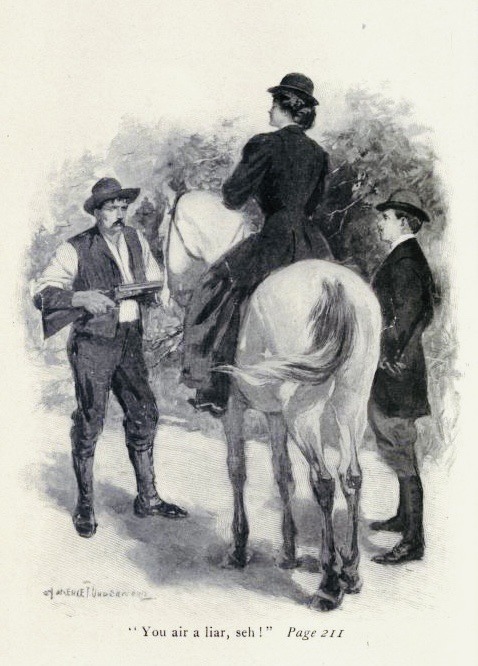
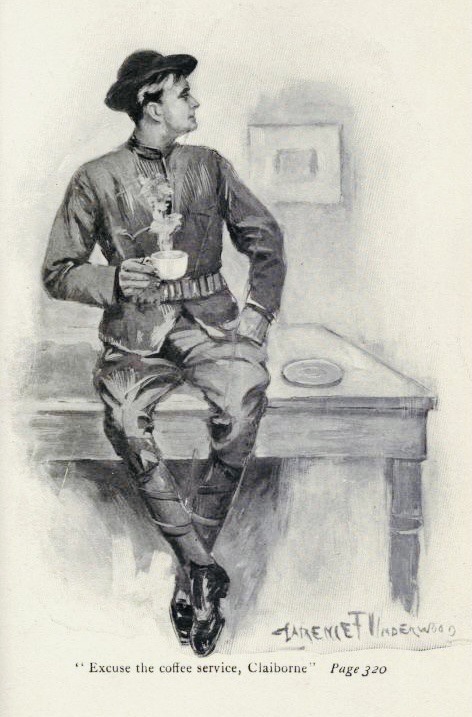

source
#beautiful books#book blog#books books books#book cover#books#vintage books#illustrated book#book design#edwardian
21 notes
·
View notes
Text
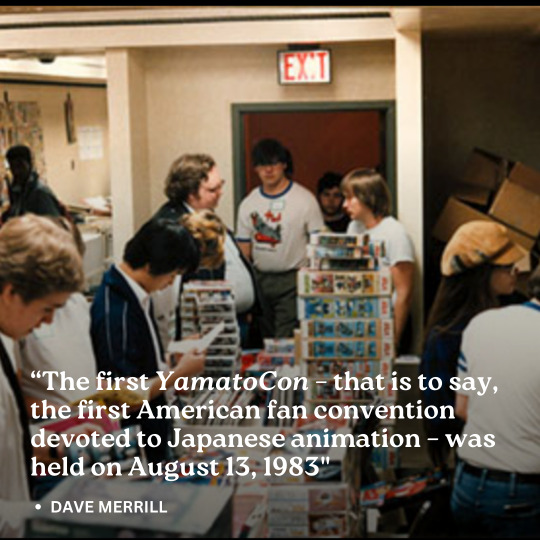
Anime conventions and their Yamato roots
by Dave Merrill
“Conventional” (ha ha) wisdom says that the first American convention devoted to Japanese animation was Project A-Kon 1990 in Dallas, Texas. This prototypical event was instigated by a group of Texas anime fans gathered under the banner of Star Blazers’“Earth Defense Command,” a Space Battleship Yamato fan club that grew to embrace all of Japanese animation. As of this writing, Project A-Kon is preparing for its 20th show.
But was A-Kon the first anime convention in North America? No. Not even close. For years, we’d seen references and offhand comments about a “YamatoCon” that was held in the Dallas area years earlier. Were these references true? Our crack team of researchers donned their explorer togs, dusted off their pith helmets, and began the harrowing search for enlightenment. Well, to be honest we sent some emails. Here’s what we found…

The first YamatoCon – that is to say, the first American fan convention devoted to Japanese animation – was held on August 13, 1983 at the Harvey Hotel in Dallas Texas. This one-day affair was the brainchild of Mark Hernandez, Don Magness, and Bobb Waller, each of whom had experience in the Dallas comics/SF fandom community and each of whom put up their own hard-earned cash to make YamatoConhappen. Scheduled the next-to-last weekend before school started, Mark Hernandez remembers the planning being as simple as getting commitments from dealers, finding a venue, and setting a date. Yes, it really is that easy to start a convention.
Programming consisted of the first 26 episodes of Star Blazersrecorded off TV, shown in continuous order (minus commercials, of course) and a bonus Yamato film. This 13-hour Journey to Iscandar (“It was a long day,” says Mark) was a primary attraction at YamatoCon, 1983 being a time when VCRs and blank VHS tape were expensive, collections of Star Blazers on video were hard to come by, and the experience of watching Star Blazers outside the morning or afternoon UHF timeslot was a draw in and of itself.
Star Blazers on video wasn’t the only activity, of course. Like other conventions past and future, YamatoCon had a dealers room consisting of 22 tables of for-sale memorabilia. It might sound small by the standards of 25 years later, but we must remember that anime merchandise of the day – what was available in the States, anyway – hadn’t achieved the tidal wave proportions it would reach in the wake of Robotech, to say nothing of the total saturation of the post-Pokemon, post-Sailor Moon years. Anime merchandise in 1983 consisted chiefly of books and model kits. Roman Albums, Anime Comics, black and white manga volumes, the occasional manga weekly, and other publications streaming from Japan in the wake of the Yamato Boom battled for the anime fan dollar alongside model kits from Yamato, Crusher Joe and My Youth In Arcadia…not to mention the endless ranks of giant robot kits from unseen shows like Mobile Suit Gundam, Dougram, Ideon, and something called Macross.Along with the remnants of late 70s super-robot merchandise sold here as Shogun Warriors, the anime con dealers room in the early 1980s was far from barren. In fact, I still waste my money on that sort of stuff.
Also available at YamatoCon were copies of Mark Hernandez and Don Magness’s Star Blazers fanzine Argo Notes. Future EDC officer/contributor, fan artist and “Between Galaxies” author Logan Darklighter won the model contest with, naturally, a Yamatomodel. It proved to be a pivotal day in Texas anime fandom. Approximately 100 attendees and 8 dealers made the show an unqualified success. Don remembers it this way: “I remember we got to the hotel early and set up the rooms, then went out to breakfast. When we got back, there were 3 young men sitting on the front steps, one of them had a convention flyer. Mark asked if they were there for the con, and they said they were. We went inside and out of their hearing range and had a little celebration. 3 people had come! We had no idea that the place would soon be packed.”
A showing of 100 might not sound like a lot in today’s numbers (“that was about 100 more than we expected,” said Don). However, when considered against the attendance at general SF conventions in 1983 – a time when your absolute largest cons MIGHT draw five or six thousand attendees and your typical Dallas or Atlanta comic book show maxed out at three – YamatoCon‘s ability to nail down that many dealers and customers is commendable.
The show’s importance went beyond the one day; people across Texas and indeed, across fandom as a whole, who were unable to attend or who heard about it after the fact were spurred into action by the mere fact of YamatoCon‘s existence. That such a thing could happen – that Americans could organize and hold a successful anime convention – was both revelation and reassurance. Anime fandom was going to be more than just a video room grudgingly tacked onto the local Star Trek show or a half-page of merchandise in the back of the latest issue of Fangoria.
READ THE REST HERE https://ourstarblazers.com/vault/317/
53 notes
·
View notes
Text

Ethel Franklin Betts (American,1880–1956) • Little Johnts's Christmas • Illustration to While the Heart Beats Young by James Whitcomb Riley • Bobbs Merril Co. • 1906
#illustration#art#illustrator#ethel franklin betts#botany book illustration#early 20th century illustration#golden age of illustration#american illustrator#kid lit#children's literature#children's illustration#children's books#sassafras & moonshine blog#illustration blog#art blog
21 notes
·
View notes
Text
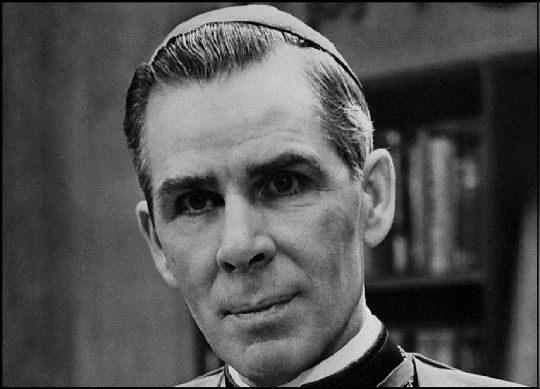
Guy C Stevenson
(Search> JUST THIRD WAY or the CAPITAL HOMESTEAD ACT)
OWN or be OWNED
“The advantages of this system are many. It would make class struggle which communism tries to incite, irrelevant. A man is willing to sit down on someone else's tools, but he is not willing to sit down on his own. Labor will be interested in capital when individual workers have a capital estate to defend.
Secondly, there would be a greater abundance of the fruits of the earth. Men work harder and more readily when they labor on that which is their OWN. Thirdly, it would make men less susceptible to foreign ideologies and the wild promises of revolutionaries, for no man would exchange his country for a foreign land if his own land afforded him the means of living a tolerable and happy life. Fourth, it is the intelligent answer to Socialists who want to break up capitalism: this solution is in favor of breaking it down.
Instead of concentrating wealth in the hands of a state administered by a few bureaucrats, the humane way is to distribute that wealth to those who created it. Communism advocates giving all productive property to a dictator; Christians advocate sharing it with the workers.
The capitalist solution is to allow one man to own most of the hens and turn to distribute eggs to workers who prepare the nests for him. The Communist solution is putting all the eggs into the hands of the dictator cook, who makes an omelet which is bound to be unsatisfying because not all the people like omelets, and some do not like the way the dictator cook prepares them anyway. The Christian solution is to distribute the hens so that every man can cook his eggs the way he likes them, and even eat them raw if that is his definition of freedom.
By distributing a wide mass of property owners throughout a country with their scattered powers, privileges and responsibilities, one creates the greatest resistance in the world to tyranny either political or economic, for just as a man is free on the inside because he can call his soul his own, so he begins to be free on the outside, because he can call things his OWN. Then property becomes what it was always intended to be -- the economic guarantee of human liberty. Deprive a man of his right to fashion things according to his own will, and you deprive him of the social basis of his freedom.
The Church is asking only that men begin to think of property as they might of love, in the sense that to possess means also to be possessed. One is not possible without the other”
~ Fulton J. Sheen; COMMUNISM and the CONSICENCE of the WEST, 1948. The Bobbs-Merrill Co., (PAGE 129 -130).
7 notes
·
View notes
Photo
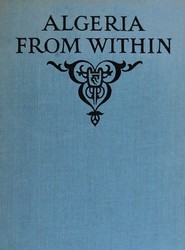
https://www.gutenberg.org/ebooks/70287
Bodley, R. V. C. (Ronald Victor Courtenay), 1892-1970
Photographer
Sampson, Julian
Title Algeria from within
Original Publication United States: The Bobbs-Merrill Company, 1927.
Credits Galo Flordelis (This file was produced from images generously made available by The Internet Archive and the HathiTrust Digital Library)
Language English
Category Text
EBook-No.70287
Release Date Mar 14, 2023
Copyright Status Public domain in the USA.
2 notes
·
View notes
Text




Livro Electric Motors.
Autor Edwin P Anderson .
Editora Bobbs Merrill.
Em Inglês.
Capa Dura.
Com 645 páginas.
Medidas 14 cm largura x 21 cm altura.
Item raro, em bom estado de conservação, apenas pequenas manchas do tempo.
Ideal para colecionadores e estudantes de eletrônica de motores.
Artes e Antiguidades
4 notes
·
View notes
Text



Picture this: it’s 2009, and you’re googling combos of “twin tailed mermaid,” “two tailed siren,” because you need to know where Starbucks got that twin-tailed mermaid from. You stumble across the phrase “twin tailed merman” in two different books, both connected to Ojibwa mythology in North America. A lead, maybe? An interesting story about twin tailed mermaid, that maybe gives a story for the Haida’s Tchimose?
Nope, it was nothing interesting. Seriously. Here’s a rabbit hole of research that I didn’t need to do.
In two different books, written in the 1940s and 50s, I found a reference for “twin tailed merman” on books.google.com. That’s the screenshot you see. Here’s the full quotes:
Nute, Grace Lee. (1944). Lake Superior. Indianapolis, New York: The Bobbs-Merrill Company.
Chapter 15, Nanabazhoo and His Followers, page 332:
“Another powerful being was the Evil Spirit, Matchi Manito, who took the form of a great fish or two-tailed merman, the Great Lynx or something evil living in the lake.”
Gillard, Kathleen Isabel. (1955). Our Michigan Heritage. New York: Pageant Press, Inc.
Chapter 1, The Indian in Michigan History, page 33:
“He (Kitche Manito or Gitchie Manito) was not so powerful as Matchi Manito, the Evil Spirit, who took the form of a two-tailed merman and dwelt below the water.”
Where did they get their sources? Who knows, maybe they were copying each other. Because I lived in Michigan, I went to the library, dutifully looked these books up, photocopies the references, and looked for footnotes or other sources that explained where this story came from. The books had nothing.
So, I went back to the internet, and found a reference to a being with a similar name in Longfellow’s “Song of Hiawatha,” an epic written in 1855. While Longfellow wanted to honor Native Americans, the work is also criticised for Americanizing Ojibwa culture and perpetuating Native stereotypes.
The Song Of Hiawatha by Henry W. Longfellow:
Mitche Manito the Mighty,
He the dreadful Spirit of Evil,
As a serpent was depicted,
As Kenabeek, the great serpent.
Very crafty, very cunning,
Is the creeping Spirit of Evil,
Was the meaning of this symbol.
This gives a different spelling — Mitche Manito and not Matchi Manito (or the variations Kitche Manito and Gitchie Manito). It also says Mitche Manito is a serpent, not a merman, twin-tailed or otherwise.
My next step was to a book written by a Christopher Vecsey, who specialises in Native American studies. In Traditional Ojibwa Religion and its Historical Changes, I found a reference to an “Underwater Manito:”
Page 74
“The Underwater Manito was not a single manito but rather a composite. It consisted of two main beings, the underwater lion and the horned serpent... The Underwater Mantito possessed great and dangerous powers... It was not totally evil, however.”
Page 82
“Christian influence is even more apparent in modern Ojibwa belief in an evil manito called Matchi Manito. Twentieth-century Protestant as well as seventeenth-century Catholic missionaries have taught the Ojibwas about the Christian Devil (Kellogg 1925: 106-107), sometimes associating it with the Underwater Manito, sometimes with the Windigo.”
Still a water being, but definitely not a twin-tailed merman. Which meant this research was turning into a wild goose chase, as I desperately tried to verify that twin-tailed Ojibwe mermen were a real thing.
Before I threw in the towel on this, I decided to look up what an actual Ojibwe person had written about this. Which led me to Basil Johnston, an Ojibwe writer and storyteller. In his 1995 book titled The Manitous : The Spiritual World of the Ojibway, he had a reference that almost matched, but not quite:
page xxi. “The Matchi-auwishuk, the Evil Ones... These were man-hunting manitous that preyed upon evil-doing humans as well as those who gave in to excess. The threat of the Weendigoes and Matchi-auwish was usually enough to bring about compliance with the perceived laws and customs.”
At this point, I figured that Longfellow and the other white authors didn’t have the most accurate info. Looking back at the references I had, it looks like a lot of authors were conflating ideas from different tribes and not working with actual Native myths to begin with. I abandoned trying to figure out where the reference to a “twin tailed merman” crept into Ojibwe folklore, and instead read several of Johnston’s books. From those, I learned the word for “mermaid” is roughly “nebaunaube” in Ojibwe.
If you’re looking for Ojibwe merfolk (nebaunaube) stories, I recommend checking out Chapter 9: Nebaunaubaewuk and Nebaunaubaequawuk in Johnston’s 1976 Ojibway Heritage.
References
Match manito as a twin tailed merman, Chapter 15, page 332: Nute, Grace Lee. Lake Superior. Edited by Milo M. Quaife, The American Lakes Series. Indianapolis, New York: The Bobbs-Merrill Company, 1944.
See also, Chapter 1, page 33: Gillard, Kahleen Isabel. Our Michigan Heritage. New York: Pageant Press, Inc., 1955.
Matchi-auwish definition, page 51: Johnston, Basil. "Anishinaubau Thesaurus." East Lansing: Michigan State University Press, 2007.
See also, Pages xx-xxi: Johnston, Basil. The Manitous: The Spiritual World of the Ojibway. New York: Harper Collins, 1995.
For another depiction of matchi manito/underwater manito, pages 74 and 82: Vecsey, Christopher. Traditional Ojibwa Religion and Its Historical Changes. Philadelphia: The American Philosophical Society, 1983.
For discussion of manitos in general, see pages 22-31: Landes, Ruth. Ojibwa Religion and the Midéwiwin. First ed. Milwaukee: The University of Wisconsin Press, 1968.
For the preferred spelling of manidoo, see the Ojibwe People’s Dictionary: https://ojibwe.lib.umn.edu/
pages 133-149, Chapter 9: Nebaunaubaewuk and Nebaunaubaequawuk, in: Johnston, Basil. The Manitous: The Spiritual World of the Ojibway. New York: Harper Collins, 1995.
Johnston, Basil. Ojibway Heritage. New York: Columbia University Press, 1976.
---. The Bear-Walker and Other Stories. Royal Ontario Museum.
---. Honour Earth Mother. Lincoln: University of Nebraska Press.
#merman#mermaid#ojibwe#anishinaabe#twin-tailed merman#twin-tailed mermen#twin-tailed siren#rabbit hole
0 notes